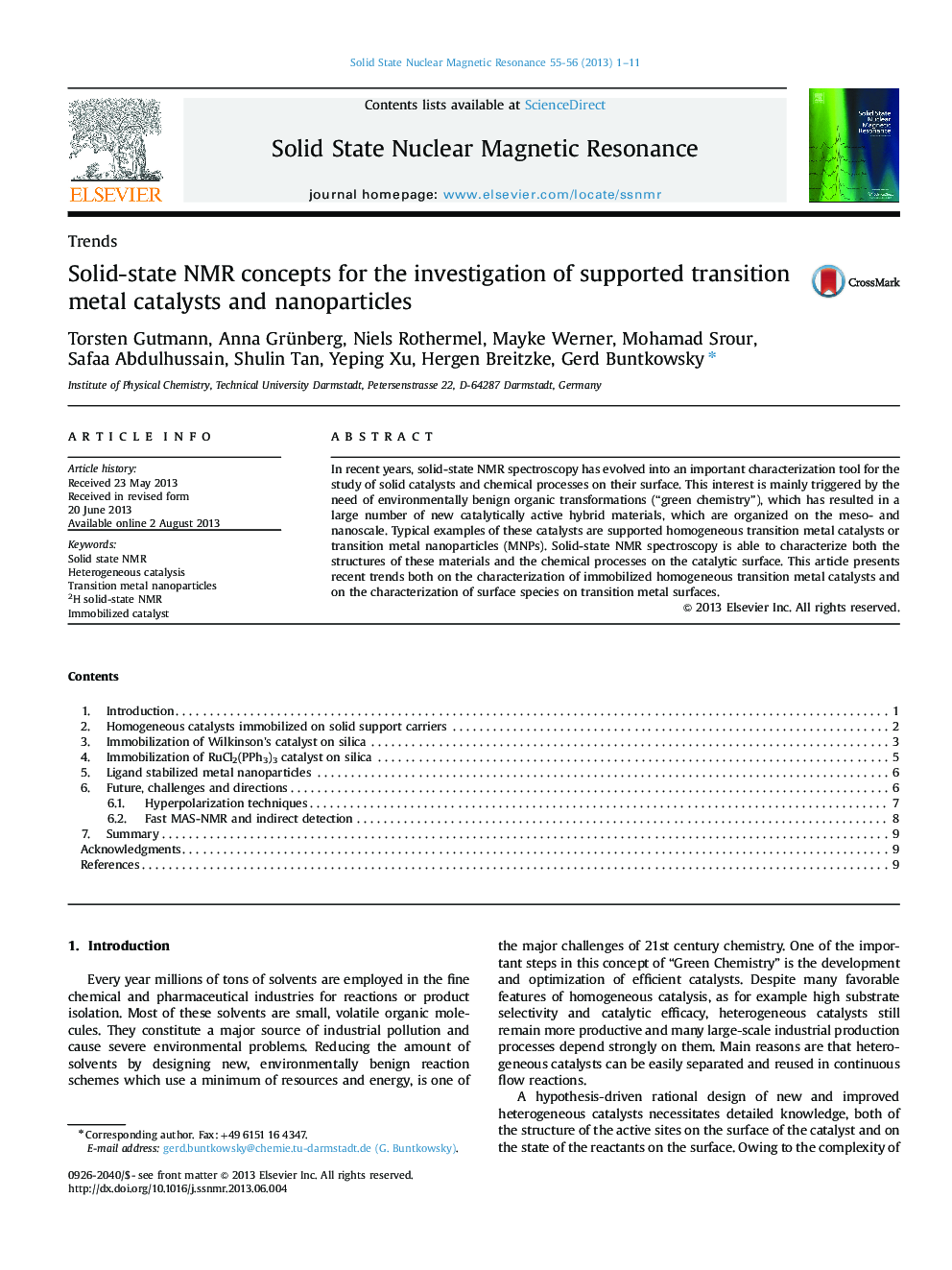| Article ID | Journal | Published Year | Pages | File Type |
|---|---|---|---|---|
| 5420461 | Solid State Nuclear Magnetic Resonance | 2013 | 11 Pages |
â¢Review on trends in solid-state NMR for studies of heterogeneous catalysts.â¢Structure determination of immobilized catalysts by heteronuclear solid-state NMR.â¢Investigation of the surface chemistry of nanostructures by 2H solid-state NMR.â¢Sensitivity enhancement by hyperpolarization techniques for surface studies.
In recent years, solid-state NMR spectroscopy has evolved into an important characterization tool for the study of solid catalysts and chemical processes on their surface. This interest is mainly triggered by the need of environmentally benign organic transformations (“green chemistry”), which has resulted in a large number of new catalytically active hybrid materials, which are organized on the meso- and nanoscale. Typical examples of these catalysts are supported homogeneous transition metal catalysts or transition metal nanoparticles (MNPs). Solid-state NMR spectroscopy is able to characterize both the structures of these materials and the chemical processes on the catalytic surface. This article presents recent trends both on the characterization of immobilized homogeneous transition metal catalysts and on the characterization of surface species on transition metal surfaces.
Graphical abstractCharacterization of Transition Metal Catalysts by Multi-Nuclear Solid State NMR.Download full-size image
